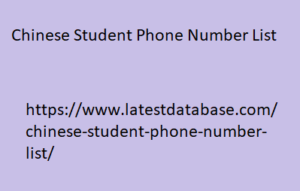|
|
Part 1. Communicate with your readers , they try to search for the answer in their head. This behavior is called an open loop , and is often used in titles when creating articles. for example ・3 reasons for creating ○○ ・5 characteristics of people who are likely to become ○○ It is a technique that gives people a desire to search and encourages clicks. In addition to titles, it can also be used in headings, introductions, and other parts of the text. As writers, we tend to have the answer from the beginning, so we tend to move on with the story based on the answer, but by including it at a level that doesn't feel strange, you can lead the reader to the end of the article.
You can go. Part 2. Create a structure with a story of escape from ○○ Love, illness, life, management. No matter what the theme, people are strongly drawn to something that has a story behind it. If you start your conversation by defining the Chinese Student Phone Number List problem, saying, ``This happened the other day...'', you'll be interested in what happens next. By creating articles with a story structure of ``I solve this problem'' while keeping in mind the beginning, development, development, and conclusion, readers can think ``Ah, this is the same for me'' and take it as their own story, or ``I wonder what will happen next.

'' ” and keep reading without getting bored. Of course, Kisho-Tenketsu is not the only basis, but if you remember it as a basic pattern, it can be applied to various techniques. In addition to this beginning, development, development, and conclusion, there are many other story structures, so it is important to actively input input on a daily basis. Part 3: Be aware of paragraphs If you know a little about the web, you may have heard this word before. A paragraph refers to a line break (p tag). Instead of "This topic is getting long, so I think it's time to break the line...", instead of "This topic is different from the previous one, let's put a line break!", and put one paragraph per topic, and add a meaningful line break.
|
|